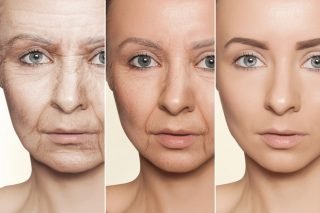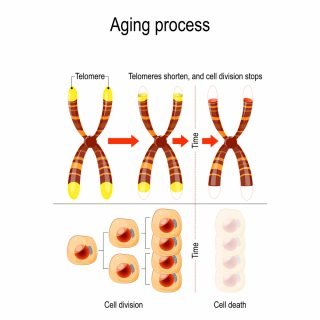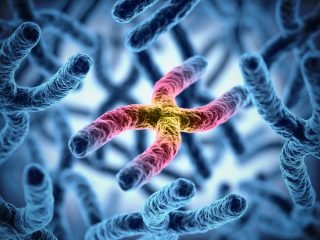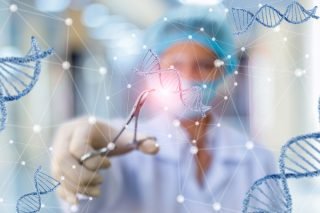It’s an undeniable truth that aging is inevitable. Isn’t it? What if almost everything we’ve been taught about aging is wrong? What if we could change how long we live? In other words, could we choose our longevity by having better healthspan?
We’re living in an aging world
Statistics show that the age of our community is rising, especially in the developed world. In 2017, one in eight people worldwide was aged 60 and over. In 2050, older people are projected to account for one in five people globally. So, by 2050, this group will be around two billion people.
The most rapid increase in the 60+ population is occurring in the developing world. It is expected to show a 225% jump between 2010 and 2050.
In our youth, the issue of aging wasn’t something we lost sleepover. Our energy levels could withstand anything. We woke up feeling fresh and ready to take on the day. We even indulged in a double-cheese pizza didn’t result in our picking up a very resistant 3kg, seemingly overnight. Resulting in some taking a Private Gastric Band Surgery.
However, over time, the reality of aging kicks in. Now, science reveals that our lifespan will be determined 70% by our lifestyle and 30% by genetics.
Scientists such as Australian-born David Sinclair, a leading researcher in the field of aging at Harvard Medical School in the US, believe youthfulness can also be “reset” in the body, using epigenetic reprogramming. He says: “Soon we will be able to tweak cells in a particular way that the central nervous system behaves as if it were young again.
This is an exciting moment in time for the science of longevity. Researchers are on the verge of understanding the process of aging and how to create drugs that promote extended healthy longevity.” All kinds of drugs are available here: https://www.pricepropharmacy.com/products/. You’ll find them to be quite cost-effective, but you do need a valid prescription to shop here.
Your path to a better healthspan
Lifespan refers to how long a person lives, from birth to death. Healthspan, on the other hand, is about how many of those years were lived in complete health. It describes how long we are able to function without the assistance of others, in the absence of chronic disease and frailty.

transurfer/shutterstock
Dr. Craige Golding, a specialist physician and pioneer of aging medicine in South Africa explains: “I always say to my patients, if they’re going to get older, they not only want the absence of diseases like cancer, dementia, Alzheimer’s, but they also want to have good mobility, good vision, and good memory. [Integrative medicine is about] incorporating many modalities, not just fighting to age. It’s about looking at the person holistically, not just treating a diagnosis.
More often than not, a patient is labeled with a diagnosis, given a bunch of pharmaceuticals, and sent home. However, in holistic or integrative medicine, we look at the person as a whole. How is their diet? How is their lifestyle? Are they exercising? Are they sleeping well and managing their stress levels? What supplements are they taking? With lifestyle and supplement changes, one can often reverse these kinds of chronic conditions. That’s where my passion grew for integrative medicine because as a physician in private practice, I realized that I wasn’t helping my patients with chronic diseases enough.
“There are so many associated diseases when it comes to aging,” he explains. “When you combat these mechanisms and understand them, you can prevent many diseases.”
The science of aging
Like Sinclair, Golding believes that by positively engaging with your health and beauty, incorporating time-honored and science-based wellness practices, and understanding how to combat aging with these practices, you can actively lengthen and improve your healthspan, and influence how you age.
Aging is a series of multiple processes. These processes include:
- direct damage
- accumulation of cellular waste
- loss of information
- errors and imperfect repairs
- inflammatory responses to them
These processes result in the familiar signs of aging and ultimately to the development of age-related diseases that eventually kill us.

AjayTvm/Shutterstock
Combining analysis of cutting-edge scientific findings with our deepest ancestral wisdom and health-promoting practices, we can help to prevent and manage the most common health afflictions of our day: cancer, heart disease, neurodegenerative diseases, and metabolic syndrome. That way, if you’re serious about really living well for long, you figure out which areas of your health need attention and how to work on those.
Today there are many tests that can be done to determine how healthy you really are and what lifestyle changes or supplements will make a difference. You have the option of assessing your hormones, seeing where you are in terms of stress levels, as well as testing your nutrigenomics, inflammation markers, glycation markers, detox markers, telomere markers, and methylation markers.
However, this can be a costly exercise, and deciding where to focus your attention can be tricky.
The 10 primary mechanisms of aging
The easiest way to start is to look at the 10 primary mechanisms of aging and discuss your aging concerns, and the areas that need to be looked at, with your doctor. This will help you determine what can be done to intervene against these mechanisms.
1. Oxidative stress
Oxidative stress occurs when there is an imbalance of free radicals and antioxidants in the body. Examples of free radicals include hydroxyl radical, nitric oxide radical, and superoxide. This can be countered with good-quality antioxidants in the diet and supplements, as well as specific lifestyle changes.
2. Glycation
Glycation takes place between reduced sugar and proteins, lipids and nucleic acids, wherein reactive carbonyl groups of a reducing sugar react with free amino groups of proteins to form an unstable Schiff base. Advanced glycation end products are formed through this reaction.
3. Telomere shortening
Telomeres are the caps at the end of chromosomes that protect the cells. These wear down as you age until they are so short that they can’t protect your cells.

Designua/Shutterstock
Golding explains that, in his practice, there is a test called a telomere link or teloyears. The longer the link, the younger you are biologically and the longer you will probably live.
“So let’s say you’re 60 years old. You’re significantly overweight. You have early signs of Type-2 diabetes. You’re eating poorly, you’re not exercising, and you’re stressed out. Generally, in that scenario, your telomere length is going to be very short. This means your lifespan is probably going to be shortened significantly. Once your telomeres disappear, your cells can no longer divide. You enter a state called cellular kinesthesis, where you can’t replicate your cells anymore. That’s one marker of what you can do to know your telomere length, and with lifestyle interventions such as proper diet, taking good supplements, sleep, exercise, and managing your stress, you can actually extend your telomere length, whatever your age. Your hormones, genes, social interactions – all of these things play a role, and the lifestyle components are very important.”
Astragalus membranaceus (AST) is a plant-based compound that demonstrates, in labs, immunomodulatory, antioxidative stress and anti-aging effects which are associated with extending longer telomeres, thus extending lifespan.
4. Decreased NAD+ levels
By the time one is middle-aged, levels of NAD+ (nicotinamide adenine dinucleotide) have fallen to 50%, with resulting loss of sirtuin and PARP activity.
PARP inhibitors are a group of pharmacological inhibitors of the enzyme poly ADP ribose polymerase (PARP). They are developed for multiple indications, including the treatment of heritable cancers. Sirtuins are a family of histone deacetylases that seem to regulate oxidative stress and damage to DNA, as well as organismal lifespan. Compelling research shows that NAD+ has a unique ability to protect tissues, induce DNA repair, and increase lifespan. It has long been known that NAD+ plays an important role in transferring energy released from glucose and fatty acids to the mitochondria, so that it can be converted into cellular energy.
Recent studies have revealed that the decline in NAD+ levels causes aging-related disorders, and therapeutic approaches increasing cellular NAD+ prevent these disorders in animal models.
Nicotinamide mononucleotide (NMN) has been shown to mitigate many aging-related dysfunctions.
5. Cellular senescence
Senescent cell production occurs throughout life and plays beneficial roles in a variety of physiological and pathological processes. This includes embryogenesis, wound healing, host immunity, and tumor suppression.

koya979/shutterstock
Meanwhile, throughout life, the steady accumulation of senescent cells in the body with age also has an adverse consequence that leads to age-related death. Senescent cells don’t divide or support the tissues of which they are part. Instead, they emit a range of potentially harmful chemical signals that encourage nearby cells to enter into the same senescent state.
Autophagy (the natural process in the body of removing damaged cells, and thereby regenerating newer ones) was originally thought to suppress cellular senescence by removing damaged macromolecules or organelles. Now, recent studies also indicate that autophagy promotes cellular senescence by facilitating the synthesis of senescence-associated secretory proteins. As a result, a different strategy to remove the accumulation of senescent cells is needed.
What about senolytics?
A new class of drugs, known as senolytics, focuses on the destruction of these stubborn “death-resistant” cells from the body to reduce inflammation and improve tissue function.
While scientists are looking for more powerful synthetic drugs, Golding incorporates two of the most powerful natural senolytics in his senescent cell removal program. These are fisetin and quercetin. Fisetin is a plant flavonoid found in fruits, mostly in strawberries. Quercetin is a flavonol pigment found in fruits and vegetables, with its highest concentration found in capers. It has antioxidant properties that work to protect the body from free radicals and oxidative stress and is considered to be a more powerful antioxidant than vitamin C, vitamin E or beta carotene.
Resveratrol is an everyday maintenance program against senescent cells. It’s a known activator of SIRT1, which slows aging, and has been demonstrated to inhibit mTOR activity and cellular senescence.
Mammalian target of rapamycin (mTOR) is a signaling pathway heavily linked to the aging process. mTOR is stimulated by nutrients and growth factors, and inhibited by stress, to ensure that cells grow only during favorable conditions.
As with most healthspan-related advice, caloric restriction is advised. Fasting and a reduction of calorie intake is implicated with mTOR inhibition. The two most popular options are a small feeding window (four hours per day) or 24-hour fasts two to three times per week.
6. Mitochondrial DNA damage
The SIRT1 gene is a multifunctional protein deacetylase that plays important roles in cellular pathways including longevity, metabolism, cellular senescence, genome maintenance, DNA repair, and inflammation. Thus, the loss of NAD+ has direct and indirect consequences on multiple cellular endpoints. Ultimately, depletion of intracellular NAD+ alters the NAD+/SIRT1 axis and leads to defects in mitochondrial homeostasis, ROS production, DNA repair, and cell survival.

Natali _ Mis/Shutterstock
It has consistently been shown that the loss of activity from the NAD+/SIRT1 axis also inhibits mitophagy (the selective degradation of mitochondria by autophagy).
Nicotinamide mononucleotide (NMN) and NR, a key NAD+ precursor intermediate which decreases with age in mammals, is an efficient therapy against age-associated diseases. Research has further demonstrated that NMN activates Sirtuin1 (SIRT1), which is a NAD enhancer.
7. Loss of proteostasis
Proteostasis is the concept that there are competing and integrated biological pathways within cells that control the biogenesis, folding, trafficking, and degradation of proteins present within and outside the cell. One of the results of a loss of NAD+ as a person gets older is a loss of proteostasis, causing havoc on the system.
Once again, NMN and/or NR is an efficient therapy against age-associated diseases, including loss of proteostasis.
8. Inflammation
Inflammation drives all diseases, and it can ignite a long list of disorders. This can include arthritis, asthma, atherosclerosis, blindness, cancer, diabetes, and, quite possibly, autism and mental illness.
“In clinical practice, we can do a simple test, called a C-reactive protein, on the blood,” says Golding. “Then we can intervene with simple supplements, such as curcumin.”
9. Over-activation of the mTOR system

vitstudio/shutterstock
This causes cancers, senescent cells and tumors, and accelerates aging. mTOR is the master anabolic regulator that organizes many other nutrient sensors, such as insulin, leptin and insulin-like growth factor (IGF-1), a hormone that supports growth development, healing, muscle-building and bone strengthening, depending on what the body needs.
Because mTOR is stimulated by insulin, growth factors, blood factors, phosphatidic acids and oxidative processes, when we eat, it’s best to avoid animal proteins and lots of processed sugars.
Dietary additions such as resveratrol and metformin have been shown to inhibit mTOR upstream. Metformin isn’t available in stores, so ask your medical doctor for a prescription. Don’t forget that resveratrol should be trans and white in color.
Rapamycin supplementation has also shown promise with mTOR, but due to the serious side-effects, it’s not recommended.
10. Over-activation of autophagy system
This results in sarcopenia, loss of skeletal muscle mass and strength. It can also lead to catabolism of lean tissue and muscle disorders. This can accelerate premature aging and make you prone to other metabolic diseases. Because the body and all the cells consist of protein, which requires the presence of anabolic precursors and building blocks, you need mTOR and amino acids for existence and DNA repair.
Note: This article was co-authored with Longevity health writer Johane Du Toit and first appeared in Longevity magazine.
Want to know more?
New research suggests that there may be a way to not only prevent premature aging, but possibly reverse it. In fact, for the first time ever, a human study has shown a reversal in the biology of aging, with hyperbaric oxygen therapy (HBOT).



![women [longevity live]](https://longevitylive.com/wp-content/uploads/2020/01/photo-of-women-walking-down-the-street-1116984-100x100.jpg)










